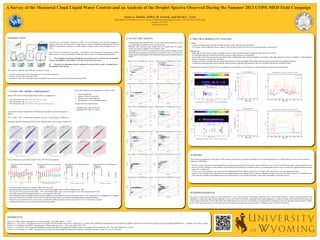This research summarizes measurements taken during the COPE-MED field campaign to better understand warm rain processes and entrainment effects on heavy precipitation. LWC probes were compared and generally agreed well, though the PVM overestimated LWC at higher concentrations and smaller diameters. A LWC survey with vertical statistics was conducted. Analysis of droplet spectra bimodality from low-precipitation cases found evidence of bimodality but secondary activation was unlikely the cause, with the bimodality mechanism remaining unclear. Future COPE analysis will utilize these LWC and bimodality findings to evaluate hypotheses regarding warm rain processes and entrainment impacts on heavy precipitation.
